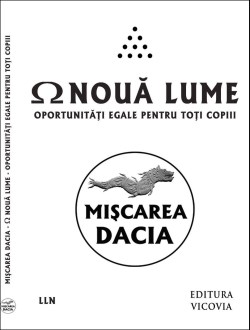 Vă invit să vă alăturaţi grupului Facebook Mişcarea DACIA, ce-şi propune un alt fel de a face politică!
Vă invit să vă alăturaţi grupului Facebook Mişcarea DACIA, ce-şi propune un alt fel de a face politică!Citiţi partea introductivă şi proiectul de Program, iar dacă vă place, veniţi cu noi !
O puteţi face clicând alături imaginea, sau acest link
Posts Tagged ‘Forme’
Hyperian History Of The World (3rd Century)
“Hyperian History Of The World (3rd Century)
In the 3rd Century, the Hellenic world, centred on Alexandria, was awash in various, conflicting sects of Christianity, ranging from those more radical and more Jewish, to those more pagan, such as the Gnostic sects, as well as many other non-christian sects of Greek/Roman paganism. In the previous century, the religious element of these sects had taken precedence over any kind of intellectual, philosophical elements. But in the 3rd century, a great genius appeared in the world who would revive Greek philosophy and combine it with the religious sensibility of the time to produce a truly intelligent and intellectual religion. The Genius was Plotinus and his philosophical religion became known as Neoplatonism.
After travelling to Alexandria seeking philosophical wisdom, Plotinus came across a man called Ammonius Saccas, whose lectures on the philosophy of Plato so affected Plotinus that he immediately began studying under this new teacher. After many years of study under Ammonius Saccas, Plotinus began travelling around gaining further wisdom from Persian, Indian and Arab philosophers before finally settling in Rome towards the end of his life, where he spread his teachings around the great city.
Plotinus’s philosophical religion is basically the philosophy of Plato turned into a religion. Plotinus himself insisted that he was not creating anything new, but was rather producing the culmination of Plato’s philosophy. In the system of Plotinus, everything has its source in what he called The One. The One is essentially the arche, the source of everything. But for Plotinus, The One, as the source of everything, is very similar to Pythagoras’s concept of the point that contains all other points, i.e. The One is purely dimensionless and immaterial, yet contains within it everything else in the universe.
Plotinus’s system consists of a series of emanations starting from The One. The first thing that emanates from The One is The Nous, basically the same Nous as that of Anaxagoras. The Nous is the mind or the intellect of the universe, the thing that guides it and controls it. For Plotinus, the Nous contains within it all of the perfect Forms that Plato had spoken of. As the mind of the universe, the Nous knows everything about the universe and thinks all possible thoughts simultaneously.
The next emanation is the Psyche or the soul, emanating from the Nous. The Psyche is equivalent to Plato’s Demiurge. Whereas the Nous thinks everything simultaneously, the Psyche thinks slowly and as a linear process. The Psyche can access the Forms present in the Nous and use them to create the next emanation which is Nature, or the physical world, which is, as Plato said, an inferior copy of the Forms in the Nous. The Psyche is also split into two parts, firstly the upper part which is the World Soul, the collective soul of the world, and secondly, the lower part which takes the form of all the individual souls in the universe.
As these individual souls are only one emanation away from the physical world, Plotinus explains that these souls take the physical world to be true reality, when, in fact, True reality is mental rather than material, the true Forms in the Nous rather than the inferior copies of them in Nature. For Plotinus, the task of our souls is to leave behind the physical world and travel back up the emanations, firstly to the upper Psyche, or World Soul, then into the Nous itself where the True Forms are, and finally back to The One, which contains everything. This idea expands on Anaximander’s original concept that the universe begins as apeiron and shall return to apeiron.
Unfortunately, Plotinus’s religion, based on reason, rationality and mathematics, as well as the ideas of the greatest of geniuses of Ancient Greece, failed to take hold of Europe which, instead, adopted the absurd, irrational, faith-based version of Christianity which took over the Roman empire.
Of course, it is not too late to abandon the absurdity that is Christianity and revive the brilliant ideas of Plotinus, a religion which would far better have served the Romans and, indeed, the rest of the world. A religion based on reason, philosophy and mathematics is precisely what the world needs right now. The central idea can be summed up by Plotinus’s supposed last words: “Try to raise the divine in yourselves to the divine in the all.” If that’s not Hyperian, I don’t know what is.”
– Azure Circe – Hyperian

Istoria Hiperiană a lumii (secolul al IV-lea î.Hr., Partea I)
Tags: Anaxagoras, Apollo, Dionis, Forme, Heraclit, HiperUmanitate, Hyperianism, Parmenide, Pitagora, Platon, Raţiunea, Socrate












